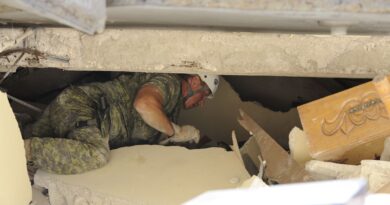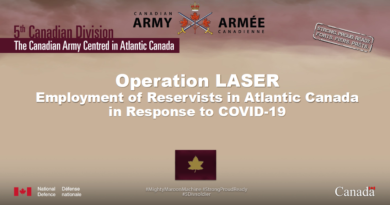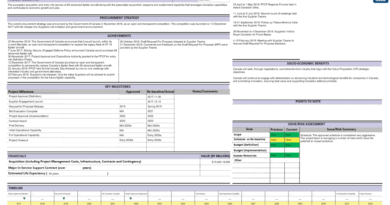Recruiting and Retention in the Canadian Armed Forces
Introduction
One of the latest defence policy initiatives states that the Canadian Armed Forces (CAF) recruiting process will be reformed in all aspects to reduce the time to enrol. There is no doubt that the recruiting process needs to be reformed, however, the problem is not with the length of the enrolment process but with the lack of suitable applicants and the lack of training venue capacity.
Reviewing current website information, it appears that little has changed in the recruiting process over the past several decades. The issue in the past was the shortfall in combat arms and hard sea ‘trades’ (now known as occupations) recruiting, and the push was on to increase enrolment in those occupations. The major problem then was the lack of applicants, and that problem probably still exists today – no doubt that issue needs to be addressed in CAF recruiting strategy.
Current Recruiting Strategy
The main thrust of CAF recruiting campaigns tends to concentrate on school approaches for non-commissioned member (NCM) recruits and pm media advertising for officer candidates – and those activities have considerable merit. However, school approach liaisons with high school guidance counsellors should not be the only pro-active tactic for recruiting staff, and media advertising initiatives may not be reaching enough potential applicants. Current recruiting strategy is mostly passive, whereby a Recruiting Centre is opened in selected areas with the hope that applicants will appear at the Centre if they are interested in a military career.
It is interesting to note that the hours of operation of most Recruiting Centres are 0900 – 1600 hours Monday to Friday. Those hours are convenient to the staff but they may not be convenient for prospective applicants. Those hours make it difficult for potential applicants who are working full time but who may want to pursue a more desirable career by applying to the CAF. These applicants should not have to lose one or more days pay in order to join the CAF. Recruiters should seriously consider staying open until 1800 hours and/or opening on Saturdays or evenings when more people can get time to visit the Recruiting Centre.
The rationale should be that if the number of applicants is increased, the recruiters will have a larger pool of potential recruits to select more desirable candidates. There is a strong likelihood that increasing the numbers of applicants would also result in attracting more women and indigenous people to the CAF.
Make The Recruiting Strategy Proactive
Experience tells us that the best recruits are those individuals who have been in the Reserve Force and who when school is finished then enrol in the Regular Force. These people have had military experience, are well aware of the career potential in the Regular Forces and will be successful in both basic and occupation training courses. It follows, therefore, that DND should direct recruiting staff to actively support Reserve recruiting efforts, complete with funding, to the maximum extent possible. Recruiting staff should plan to attend Reserve parade nights and help facilitate activities and exercises with Regular Force units. In other words, Reserve units should be seen as the “farm system” for the Regular Force. An added benefit of enrolling Reservists to the Regular Force is that there is a strong likelihood that these personnel will be “lifers” and make the military their career, thereby resulting in increased retention rates.
The next logical step is to ascertain the background of Reserve personnel and find out what attracted these people to join the Reserve. Obviously some joined because of financial considerations but there is a strong possibility that an interest in a military career was the main attraction. It is interesting to note that a significant number of Reserve enrolees have a background with Cadets and that may be what drew them to the Reserve. So the genesis of the home-grown farm system is probably time spent in Cadets. It follows, therefore, that recruiting staff should fully support the Cadet units, and should attend Cadet parades and assist Cadet Instructor List (CIL) officers that oversee the Cadet movement. Motivated Cadets make for motivated Reservists which results in motivated Regular CAF personnel.
Another activity that recruiting staff should focus on are events that take place in their area, for example, fall fairs, carnivals and festivals. Setting up displays and having staff on hand to answer enquiries provides an important first contact where information about the military can garnered in a casual setting rather than the formal Recruiting Centre setting. As well, these events are normally on weekends and are perfect places to take Reservists and Cadets along to help their recruiting effort.
Another proactive initiative that enhances marketing is the issue of the enrolment ceremony. If applicants are enrolled at the Recruiting Centre, parents and friends may not be able to attend, especially where long distance travel is concerned. A viable solution would be to enrol successful applicants at their local Canadian Legion. Legion members would appreciate the event and in all likelihood attend with blazer and medals. Friends and relatives would then have an opportunity to witness the enrolment and they would have some attachment to the career path chosen by the enrolee.
Marketing versus Advertising
Marketing is usually defined as everything an organization does to facilitate an exchange between itself and its clients, (i.e., the sum total of all impressions of the organization), and advertising is just one part of the impressions that must be managed.
Advertising is usually defined as the paid form of an organizational message communicated through various media. It should be persuasive and informational, and designed to influence the behaviour and/or thought patterns of the audience.
Advertising is just one of many marketing activities. And, of course, advertising has a fairly high hard dollar cost associated. However, without an effective overall marketing strategy, paid advertisements may not bring the desired results.
There are many benefits that would accrue if the recruiting strategy and process was reformed to include effective marketing. The Department of National Defence (DND) would be well advised to fund marketing initiatives that result in more effective recruiting campaigns.
It is essential that DND recognize that staff assigned to recruiting duties must be motivated to their new task and they need to be given specialized training in interviewing skills and marketing strategies. The goal of the recruiting system is to attract and enrol the best candidates possible, and the best chance to achieve that goal is to select inspired recruiting staff and train them properly. If the recruiting system is effective, it follows that the serious personnel retention issue may be mitigated.
Retention of CAF Personnel
“To have a modern and effective Armed Force, we must recruit and retain our fair share of the best people the country has to offer.”
(Royal Air Force Defense Review – 1998)
That mission statement was important then, and is still the overarching goal of all military forces today, including the CAF. The main reason that recruiting and retention of personnel has increased in importance is the issue of cost – training of personnel is both expensive and lengthy.
For example, it takes on average of four to five years and costs several million dollars to train one fully qualified line pilot. If that individual chooses to leave the Royal Canadian Air Force earlier than forecast, the only way to replace him/her is to recruit and train another person. It is not possible to recruit qualified, experienced military pilots from the civilian aviation market. Whilst aircrew training is considerably more expensive than other occupation training, the cost issue and length of training courses are still major factors that affect military operational capability.
This paper concentrates on the issue of personnel retention – it follows that recruiting results will be adversely affected if the issue of retention is not addressed. Therefore, it is obviously necessary to have an effective systematic approach to retention. Before DND can effectively address retention issues, the Department must identify and understand where problems occur and why personnel opt to leave the CAF prematurely.
Factors Affecting Retention
The Royal Air Force (RAF) Defense Review conducted attitude and occupational surveys that contained questions relating to the reasons that personnel choose to stay in or leave the service, and it is argued that these same factors would also apply to the CAF. The following paragraphs are a synopsis of the RAF Defense Review survey results, and it is reasonable to assume that much of the survey data would also be applicable to the CAF.
Turning first to factors that influence personnel to remain in the military, the main “pull in” factors, that is, those that are seen as advantages to remaining in the military, are:
• financial reasons (pay, allowances, pension, etc.);
• security of long term contract of employment;
• challenging work, responsibility and leadership;
• enjoyment of military life, and camaraderie; and
• for aircrew, the opportunity to fly.
Few “push-in” factors (that is, those that are seen as disadvantages to leaving, such as inability to get appropriate civilian job) were considered to be influential reasons for either NCM or officers to remain in the service. In fact, NCM considered financial aspects to be a key “push-in” factor. The surveys’ results suggested that some members of this group may be remaining in the service because they perceive that they would be worse off financially if they left. In all likelihood, these survey results would also apply to many CAF personnel.
Looking at the factors that influence personnel to leave the service, the main “push out” factors, that is those that are seen as disadvantages to remaining in the service, are:
• perceived promotion prospects and the promotion system;
• changes to service life and the current state/future of the service; and
• family related reasons, such as stability, separation from family and spouses’ careers.
The most influential “pull out” factors (those that are seen as advantages to leaving) are employment opportunities and career prospects in the civilian world.
Factors that influence retention appear to fall into two main groups. First are those which the service needs to continue to focus upon, including the following:
• the ongoing provision of rewarding and well managed career structures offering opportunities for advancement;
• rates of pay for all ranks which are seen as comparable with broadly equivalent civilian occupations; and
• family stability.
Second are the factors for which well-designed internal public relations and communications programs would play an important part in improving retention. Such programs will necessarily include elements of ‘listening’ to personnel as well as ‘informing’ them. These programs could address areas of potential discontent through ensuring that individuals’ expectations are realistic; that the service is precise about what it offers and what it expects; and that there are no mismatches between what the service thinks it has delivered and what individuals feel that they have received.
One example relates to the promotion and assessment systems. As previously stated, past data has suggested that the promotion system was not perceived to be fair by some personnel. All members of the service considered it highly important that promotion should be on the basis of ability. For the future, research should continue into when and why retention problems occur, and into methods of modeling and predicting retention, with the aim of formulating recommendations for its systematic management. DND would be well advised to make effort to enhance the retention rate in the CAF.
Ed Young is a retired RCAF officer with extensive experience flying, instructing and as a SAR specialist. His service includes in a Recruiting Centre.




